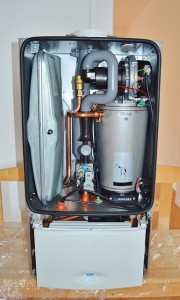 According to the US Department of Energy, water heating is the second largest energy expense in a typical household. It takes about 18 percent of your electricity bills, after cooling and heating expenses. This is why it is best to maximize its efficiency to lower your bills and get savings.
According to the US Department of Energy, water heating is the second largest energy expense in a typical household. It takes about 18 percent of your electricity bills, after cooling and heating expenses. This is why it is best to maximize its efficiency to lower your bills and get savings.
Expert Plumbing, Heating, Air and Electrical shares a few strategies for lowering your water heating bill.
Conserve Water
The simplest way to cut your heating bill is to use less hot water. You would be surprised at how much money you can save with this simple tack. You can do this by installing low-flow showerheads and faucets. Fixtures like these cost about $10 to $20 and help you achieve up to 60 percent of water savings.
Turn Down the Heat
Many manufacturers set their water heater temperature at 140°F, but 120°F setting is enough for most households. This can still give you comfortably hot water and will slow corrosion and mineral build up in your heater and pipes. Turning down the temperature can also reduce standby losses and water demand in your home.
Insulate Tanks and Pipes
When insulating an electric tank, be sure not to cover the thermostat. If it is oil or natural gas, don’t cover the top and bottom, the burner compartment, or the thermostat. Make sure to follow the manufacturer’s recommendation or seek professional help. You should also insulate your pipes to reduce heat loss and allow you to lower the water temperature setting.
Buy an Efficient Model
While a water heater can last 10 to 15 years, it is best to look for a new one if you’ve been using the appliance for more than seven years. By doing some research before your heater fails, you can choose one that suits your needs. Purchase heaters with an Energy Star Label to get savings during the lifetime of the appliance.
Apart from these tips, don’t forget to perform routine maintenance to extend the life of the appliance and lower efficiency loss. It is also advisable to take shorter showers, use cold water when washing clothes and fix any leak in your pipes.

